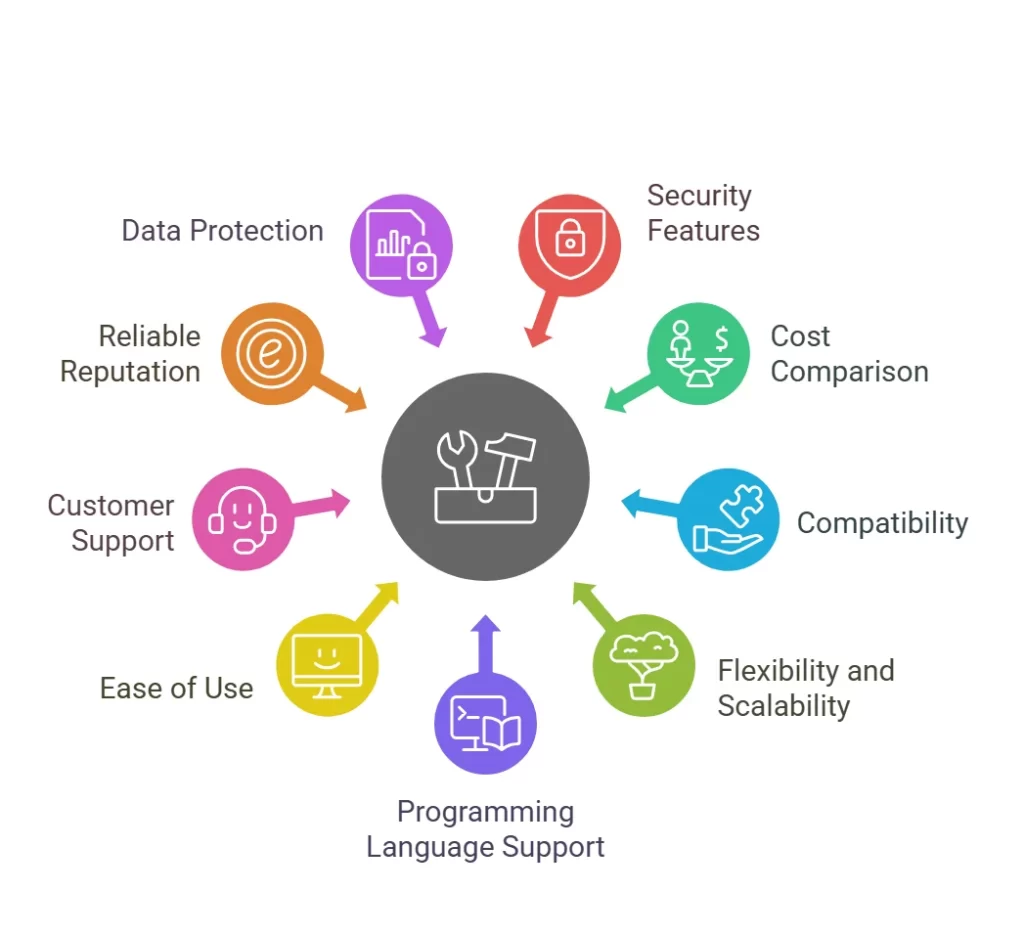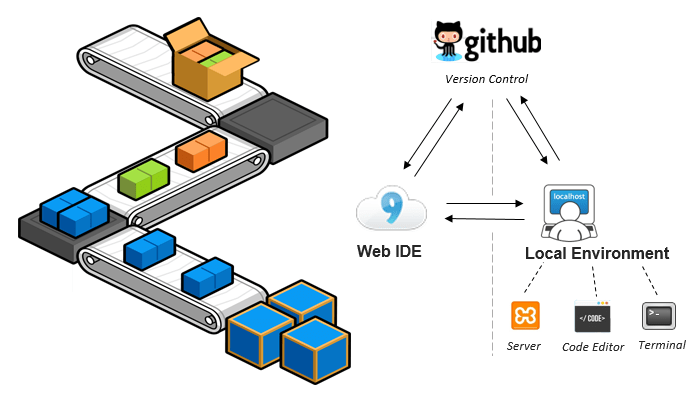
- What is an IDE?
- Features to Look for in a Web Dev IDE
- Visual Studio Code
- Sublime Text
- Atom
- WebStorm
- Brackets
- Eclipse for Web
- NetBeans
- IntelliJ IDEA
- Cloud-Based IDEs (Replit, GitHub Codespaces)
- Choosing the Right IDE for Your Project
What is an IDE
An Integrated Development Environment (IDE) is a comprehensive software application designed to provide developers with a unified set of tools for software development. It typically includes a source code editor, build automation tools, and a debugger, but many IDEs offer additional features such as code completion, version control integration, and visual drag-and-drop interface design tools. The primary objective of an IDE is to consolidate all essential development tools into one platform, allowing programmers to focus more on coding and less on switching between various programs or managing complex toolchains. This streamlined approach helps to enhance productivity and efficiency by centralizing key tasks like code editing, compiling, debugging, and deploying within a single user interface. For those looking to build a strong foundation in this area, Web Designing & Development Courses can be an excellent starting point, offering structured learning and hands-on experience with modern development tools and practices. Rather than manually invoking multiple external applications, developers can accomplish all these actions within the IDE, making the development process much smoother and more intuitive. IDEs are particularly valuable in modern web development, where developers often work with a wide range of frameworks, languages, and technologies. The complexity of managing these components can be overwhelming, but IDEs simplify the process by offering built-in features like syntax highlighting, real-time error detection, and seamless code navigation. Additionally, most IDEs integrate with version control systems like Git, making it easier for developers to collaborate and track changes. These powerful tools not only streamline individual workflows but also foster collaboration and consistency across development teams, making them indispensable for developers working on both small projects and large-scale applications. With the added advantage of supporting a wide array of plugins and extensions, IDEs can be customized to suit various development needs and preferences, further enhancing their utility and flexibility.
Features to Look for in a Web Dev IDE
When selecting an IDE for web development, there are several features to consider:
- Code Editor: A robust code editor with syntax highlighting, auto-completion, and error detection is crucial. It is the core component of any IDE.
- Version Control Integration: Built-in Git or SVN support is essential for collaborative development and managing code changes.
- Debugging Tools: Good IDEs offer debugging capabilities, allowing you to set breakpoints, inspect variables, and step through code.
- Plugin Ecosystem: An extensive plugin or extension marketplace allows you to customize the IDE to your workflow and preferred technologies
- Language Support: Look for IDEs that support multiple languages and frameworks, such as HTML, CSS, JavaScript, Python, PHP, and more.
- Live Preview: A feature that lets you see real-time changes within the browser as you code.
- Code Refactoring: Tools that assist in safely modifying your code base without introducing bugs.
- Cross-Platform Compatibility: Ensure the IDE runs on your Windows, macOS, or Linux operating system.
- Performance: Lightweight IDEs are often preferred for faster loading times and smoother performance.
- Community and Support: A strong user community and regular updates can help you resolve issues and stay current with new features.

Visual Studio Code
Visual Studio Code (VS Code) is one of the most popular and widely used IDEs among web developers. Developed by Microsoft, it is a lightweight, open-source code editor that supports many programming languages and frameworks.
Key Features:- Intellisense for intelligent code completions
- Built-in Git integration
- A massive extension marketplace
- Integrated terminal
- Debugging support for JavaScript and other languages
- Live Share for real-time collaboration.
- Git and GitHub integration
- Built-in package manager
- Smart autocompletion
- File system browser
- Cross-platform support
- Deep JavaScript, TypeScript, and Node.js support
- HTML, CSS, and front-end framework support
- Refactoring and navigation tools
- Integrated debugging and testing
- Version control support
- Support for HTML, CSS, JavaScript, and XML
- Java EE tools for backend development
- Plugin architecture
- Integrated debugging and server support
- Project Type: Tools like WebStorm or VS Code are ideal for JavaScript-heavy front-end projects. IntelliJ IDEA or Eclipse are better suited for enterprise Java applications.
- Team Collaboration: If multiple developers work on the same codebase, features like version control and real-time collaboration are essential.
- Budget: Open-source tools like VS Code, Atom, and Brackets are free, while commercial IDEs like WebStorm and IntelliJ IDEA come with licensing costs.
- Customizability: Developers who prefer a highly tailored environment may prefer tools with robust plugin ecosystems, such as Sublime Text or Atom.
- Performance: Lightweight editors are better for smaller projects or systems with limited resources, while feature-rich IDEs are better for complex applications.
- Learning Curve: Beginners may prefer simpler interfaces like Brackets or cloud IDEs, while seasoned developers might opt for more powerful tools like IntelliJ IDEA.
VS Code is particularly favored for its speed and versatility. It allows developers to efficiently work with multiple languages and frameworks and is ideal for front-end and full-stack development projects.
Sublime Text
Sublime Text is a powerful and sophisticated text editor tailored for coding, markup, and prose, offering an incredibly fast and responsive experience. While it doesn’t come as a full Integrated Development Environment (IDE) out of the box, its versatility shines through with the ability to transform into one using various plugins and packages. Notable features include the ability to make multiple selections for simultaneous editing, a Command Palette that allows for quick access to essential functions, customizable key bindings, and a rich package ecosystem accessible via Package Control. For those exploring the Scope of Web Development tools like Sublime Text offer the flexibility and performance needed to work efficiently across diverse coding environments. With its clean and minimalist design, Sublime Text is perfect for developers who value speed and efficiency. Its lightweight, yet highly customizable nature makes it a preferred choice for many seasoned developers who seek a fast and flexible editing environment.
Excited to Obtaining Your web developer Certificate? View The web developer course Offered By ACTE Right Now!
Atom
Atom is an open-source text editor developed by GitHub. Marketed as a “hackable text editor for the 21st century,” Atom is designed to be deeply customizable.
Key Features:Atom is an excellent choice for developers looking for a free, open-source alternative with a wide range of community-supported packages and themes.
Interested in Pursuing Web Developer Master’s Program? Enroll For Web developer course Today!
WebStorm
WebStorm is a powerful IDE developed by JetBrains. It is tailored explicitly for JavaScript and front-end development. Although it is a commercial product, it offers a comprehensive tool suite.
Key Features:WebStorm is ideal for professional developers working extensively with JavaScript and modern frameworks like React, Angular, and Vue.

Brackets
Brackets is a lightweight, open-source text editor specifically designed for web development, with a focus on front-end development. Developed by Adobe, it caters to the needs of front-end developers and designers. Key features include Live Preview, which allows you to see changes in real-time in the browser, preprocessor support, inline editors for quick access to code, and a variety of extensions for added functionality. For those looking to advance their skills and gain professional recognition, pursuing a Web Developer Certification can be a valuable step, complementing tools like Brackets with formal training and credentials. Brackets is particularly well-suited for projects involving HTML, CSS, and JavaScript, and its visual tools and real-time updates make it an excellent choice for designers looking to transition into development, providing a seamless bridge between design and code.
Eclipse for Web
Eclipse, traditionally known for Java development, also supports web development through various plugins, such as the Web Tools Platform (WTP).
Key Features:Eclipse is more commonly used for enterprise-level applications and suitable for developers familiar with its ecosystem.
NetBeans
NetBeans is an open-source Integrated Development Environment (IDE) that supports both web and enterprise development. Backed by the Apache Foundation, it provides a comprehensive suite of tools for a variety of programming languages. Key features include support for Java, HTML5, PHP, JavaScript, and more, along with GUI design tools, Maven and Gradle integration, and powerful debugging and profiling capabilities. For developers comparing MEAN vs MERN Stack Development NetBeans offers flexibility and tools that can support both stacks, making it easier to prototype, build, and maintain full-stack applications. While NetBeans excels in Java development, it also offers ample tools for full-stack web development, making it a versatile choice for developers working across different technologies.
IntelliJ IDEA
IntelliJ IDEA, developed by JetBrains, is a comprehensive Integrated Development Environment (IDE) primarily designed for Java development but also supports a wide range of other programming languages through plugins. Known for its intelligent code completion and analysis features, IntelliJ IDEA offers an extensive range of plugins that can enhance its functionality to suit various development needs. Its version control integration ensures seamless collaboration among developers, while the built-in terminal and database tools make it easy to manage projects and interact with databases. For web developers, understanding components like What is an HTML Iframe can be essential when working with embedded content or external resources, and IntelliJ IDEA provides the tools to work with such elements efficiently. The IDE also provides robust support for modern web frameworks, making it a versatile tool for both backend and frontend development. IntelliJ IDEA is particularly well-suited for large-scale enterprise development, where multiple languages and frameworks are involved. The Ultimate Edition offers advanced web development tools, further strengthening its appeal for developers who need a powerful and feature-rich IDE to tackle complex software projects across diverse technologies.
Cloud-Based IDEs (Replit, GitHub Codespaces)
Cloud-based IDEs provide development environments that run directly in the browser, removing the need for local setup and offering the ability to start coding quickly. These platforms include features like real-time collaboration, support for multiple programming languages, and built-in hosting and deployment, making them easily accessible from any location with an internet connection. Tools and libraries like React Bootstrap can also be seamlessly utilized within these environments, enabling developers to build responsive user interfaces using familiar components without needing extensive local configuration. For example, GitHub Codespaces delivers the full Visual Studio Code experience in the browser, with seamless GitHub integration and dev containers to ensure consistent environments across projects. Cloud IDEs are ideal for quick prototyping, teaching, remote teams, and situations where installing software locally is impractical. They offer a flexible, efficient, and scalable solution for a wide range of development tasks, especially when working across different environments and collaborating with teams from various locations.
Choosing the Right IDE for Your Project
Selecting the proper IDE depends on several factors:
Choosing the best IDE for web development ultimately comes down to finding the one that integrates smoothly into your workflow, supports the languages and frameworks you use, and boosts your overall productivity. Every developer has different needs, preferences, and styles of working, so what works best for one person might not be ideal for another. It’s a good idea to experiment with a few different IDEs by using them on smaller projects. This hands-on approach allows you to evaluate key features like ease of use, performance, customization options, and built-in tools such as debugging, version control, and extensions. For those aiming to build or strengthen their skills in this area, Web Designing Training can offer practical insights and experience with real-world tools and environments. Understanding your specific project requirements and development goals plays a critical role in selecting the right environment. By comparing each IDE’s strengths and weaknesses in the context of your needs, you can make a more informed choice that leads to a more efficient, enjoyable, and productive coding experience.

